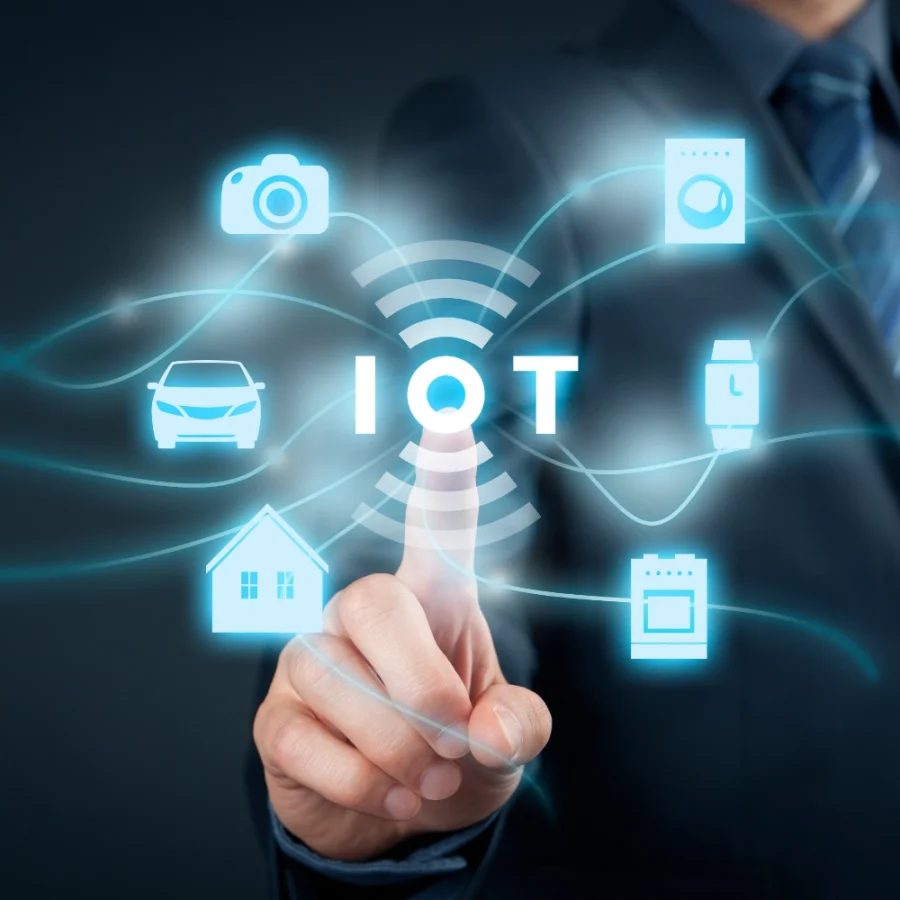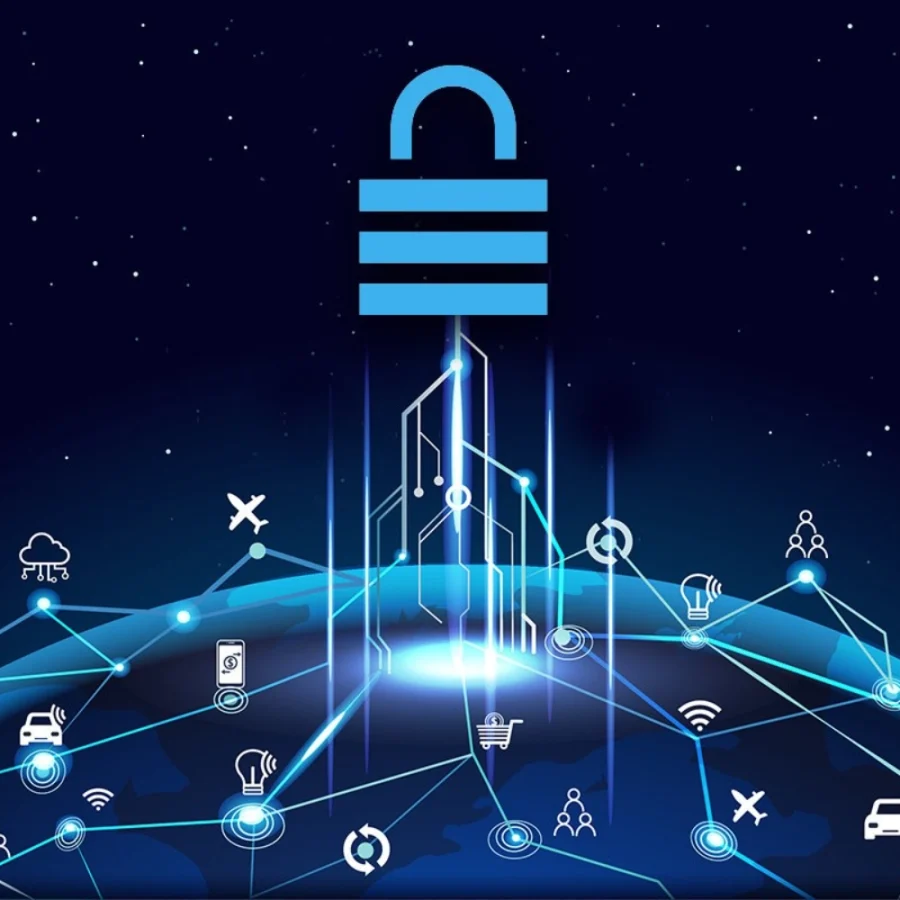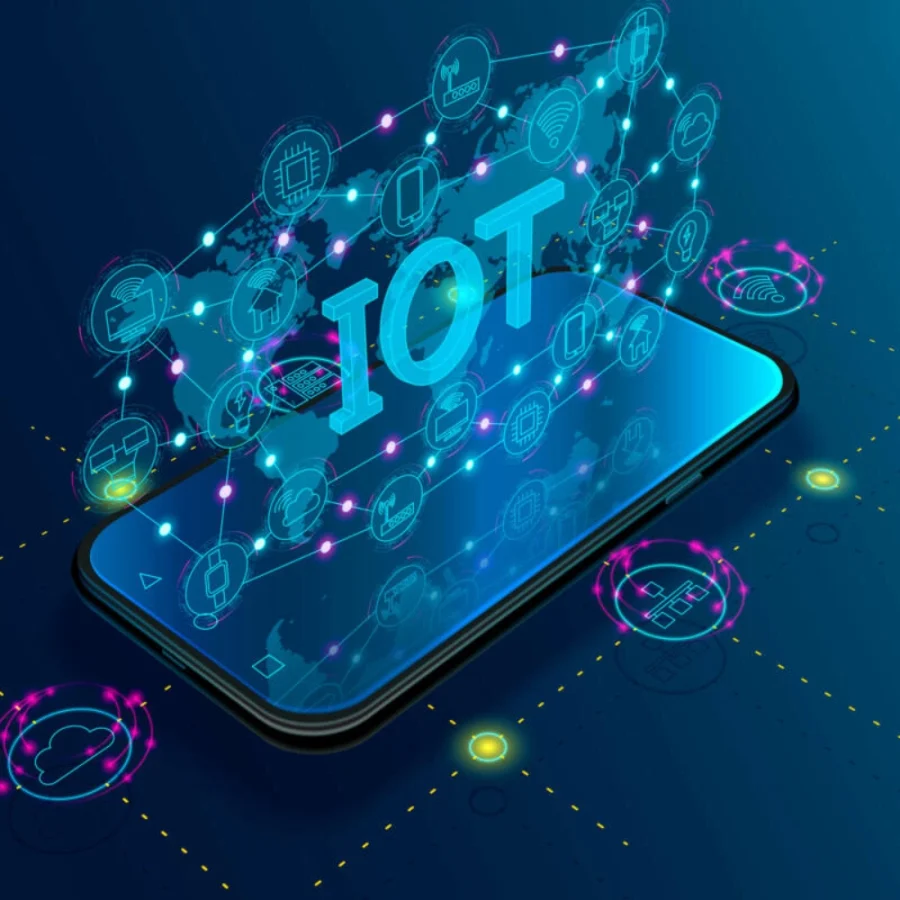Smart Solutions Meets Smart Mobile Applications
IoT Application Development
IoT application development involves creating software for Internet of Things (IoT) devices and applications. IoT devices are physical objects equipped with sensors, actuators, and network connections. These devices can sense their environment, collect data, and communicate this information with other devices or cloud-based services over a network.


Stages of IoT Application Development
Hardware Selection and Design:
Initially, the hardware for the IoT device is chosen or custom-designed. This includes components such as sensors, microcontrollers, communication modules, and power sources.
Determination of Communication Protocols: IoT devices need to communicate with each other and/or a central server. The protocols for this communication are established (e.g., MQTT, CoAP).
Power Management: Given that IoT devices often operate under energy constraints, power management strategies are developed to ensure energy efficiency and prolong device operation.
Software Development: The functionality for controlling the device and processing data is developed using specialized software typically running on a microcontroller.
Network and Security: Security measures are implemented to ensure that IoT devices communicate securely over the network. This includes data encryption, authentication, and authorization.
Remote Management and Updates: An appropriate software infrastructure is provided for the remote management and updating of IoT devices.
Application and User Interface (UI): Users typically interact with IoT devices through a mobile app or web interface. Therefore, developing a user-friendly interface is essential.
Determination of Communication Protocols: IoT devices need to communicate with each other and/or a central server. The protocols for this communication are established (e.g., MQTT, CoAP).
Power Management: Given that IoT devices often operate under energy constraints, power management strategies are developed to ensure energy efficiency and prolong device operation.
Software Development: The functionality for controlling the device and processing data is developed using specialized software typically running on a microcontroller.
Network and Security: Security measures are implemented to ensure that IoT devices communicate securely over the network. This includes data encryption, authentication, and authorization.
Remote Management and Updates: An appropriate software infrastructure is provided for the remote management and updating of IoT devices.
Application and User Interface (UI): Users typically interact with IoT devices through a mobile app or web interface. Therefore, developing a user-friendly interface is essential.
Benefits of IoT Application Development
Increased Efficiency: IoT enhances operational efficiency through automation and remote monitoring. Sensors and smart devices contribute to efficiency gains in areas ranging from manufacturing lines to energy management.
Cost Savings: IoT can lead to cost savings by optimizing energy use, improving maintenance processes, and reducing waste. Additionally, remote monitoring and diagnostics enable businesses to make quick and effective decisions.
Enhanced Customer Experience: IoT offers improved and personalized services to consumers. Smart home devices, wearables, and other IoT applications enrich the user experience in everyday life.
Security and Reliability: IoT devices and systems can enhance security and reliability. For example, security cameras, alarm systems, and other smart security devices utilize IoT technology to improve safety.
Better Data Analytics: The large volumes of data generated by IoT devices can be analyzed to support better decision-making. This data analytics provides advantages in areas such as predictive maintenance, demand forecasting, and process optimization.
Environmental Sustainability: IoT contributes to environmental sustainability by monitoring and managing energy use. Smart city projects, traffic management, and waste collection initiatives can reduce environmental impact.
New Business Models and Opportunities: IoT enables the emergence of new business models and the transformation of existing ones. Increased connectivity and intelligence in products and services create new business opportunities.
The benefits of IoT development integrate technology into business and daily life, creating a more effective, efficient, and competitive environment across various industries.
Cost Savings: IoT can lead to cost savings by optimizing energy use, improving maintenance processes, and reducing waste. Additionally, remote monitoring and diagnostics enable businesses to make quick and effective decisions.
Enhanced Customer Experience: IoT offers improved and personalized services to consumers. Smart home devices, wearables, and other IoT applications enrich the user experience in everyday life.
Security and Reliability: IoT devices and systems can enhance security and reliability. For example, security cameras, alarm systems, and other smart security devices utilize IoT technology to improve safety.
Better Data Analytics: The large volumes of data generated by IoT devices can be analyzed to support better decision-making. This data analytics provides advantages in areas such as predictive maintenance, demand forecasting, and process optimization.
Environmental Sustainability: IoT contributes to environmental sustainability by monitoring and managing energy use. Smart city projects, traffic management, and waste collection initiatives can reduce environmental impact.
New Business Models and Opportunities: IoT enables the emergence of new business models and the transformation of existing ones. Increased connectivity and intelligence in products and services create new business opportunities.
The benefits of IoT development integrate technology into business and daily life, creating a more effective, efficient, and competitive environment across various industries.
